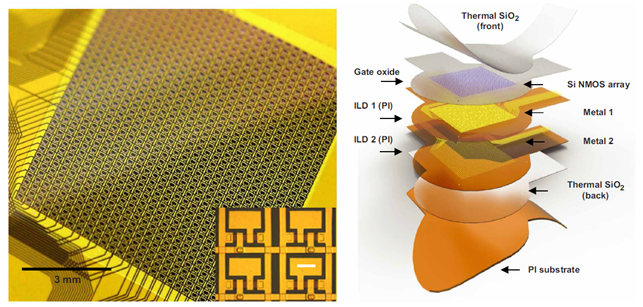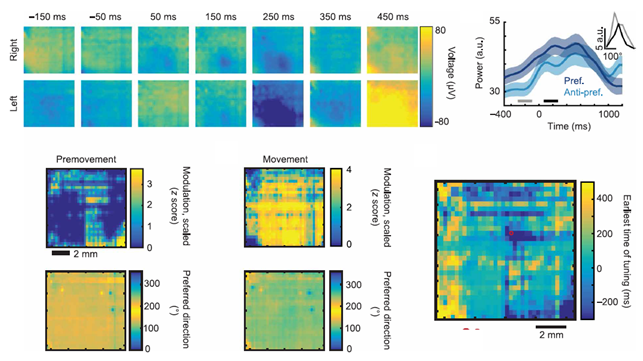Electronic and Electrical Engineering Professor Won Sang Min's Research Team,
Developed Permanently Working High-resolution Electrocorticography Sensor After Bioimplant
- Expected ground-breaking treatment and diagnosis of causes for brain and heart related incurable diseases
- High integrated sensor developed using ultrathin film semiconductor circuit
- Published on international prestigious journal named, ‘Science Translational Medicine’ on April 8th (Wed)
Electronic and Electrical Engineering professor Won Sang Min’s team reported that they have developed a permanently implantable electrocorticography sensor that may last for more than 70 years. The research team have placed the said sensor into a brain and succeeded getting high resolution signals from the brain using over 1000 electrodes. This research was conducted with Yonsei University’s professor Yoo Ki Joon, Duke University’s professor Jonathan Viventi, Northwestern University’s professor John Rogers.

[Image 1] In-body permanently plantable active flexible electronic device (left), electronic device's layer structure (right)
Recently, in-body plantable devices that can be placed into the brain directly or measure the brain waves accurately are receiving much attention. However, original devices’ electrodes number (around 100) is much smaller than the brain waves’ source which amount up to more than 10 billion neurons, so only limited information can be gathered. Also, its hard and big volume had limitations when it came to combination of the two as a result of the brain's soft curved interface.
If flexible and elastic material device is used, it is more advantageous when it comes to combination but after the complicated circuit that has many electrodes have been implanted, fluids can easily infiltrate leading to easy breakdowns. This was considered a big hardship for plantable high resolution brain wave sensors.
This research developed for the first time: a flexible electronic device after bioimplant, a permanent high-resolution brain wave sensor. This device could also measure the differences in brain waves at different environments after implanting it into the brain of a primate - monkey.
Especially, a thin film structure of silica protection protects the device perfectly from infiltration of fluids, and the brain wave sensor has a life-time without breakdowns for over 70 years.

[Image 2] High resolution brain wave data received from monkey's brain after the flexible electronic device was implanted.
This particular technology has for the first time in the world materialized bio-implantable high resolution flexible electronic device that was considered a hardship in the industry of brain science. Through this, it is expected to have a breakthrough in regards to diagnosing brain, heart related incurable diseases and their treatments. Additionally, it is anticipated to have a large influence on brain related research and development of industry in the future.
The results of this research were posted up on Science Translational Medicine, the most prestigious journal internationally regarding convergence research, on April 8th.
※ Thesis: Development of a neural interface for high-definition, long-term recording in rodents and nonhuman primates (Science Translational Medicine)
